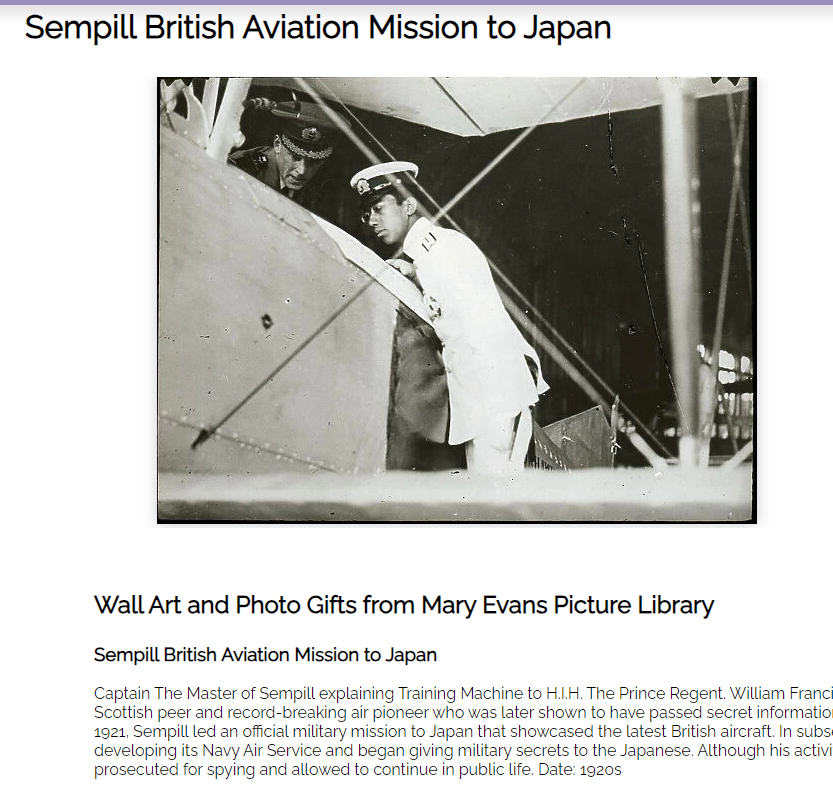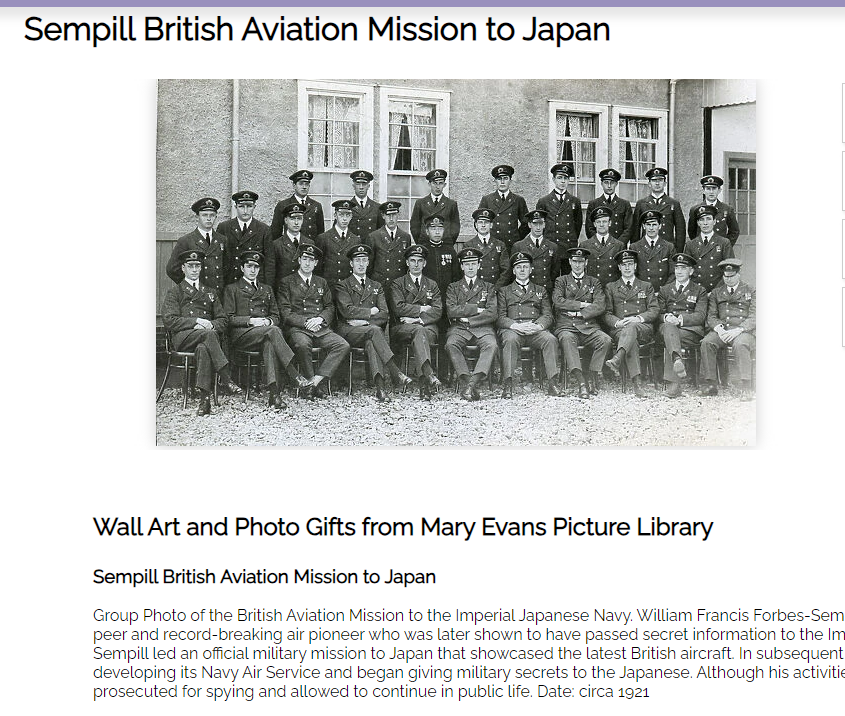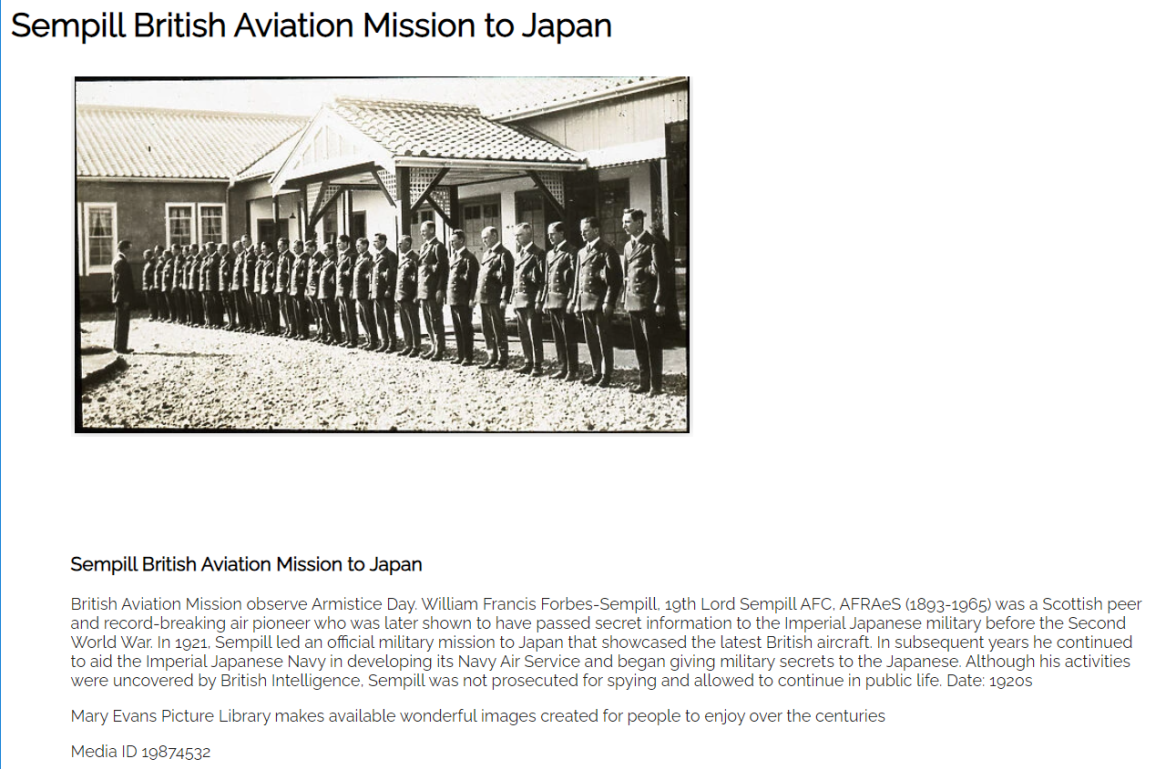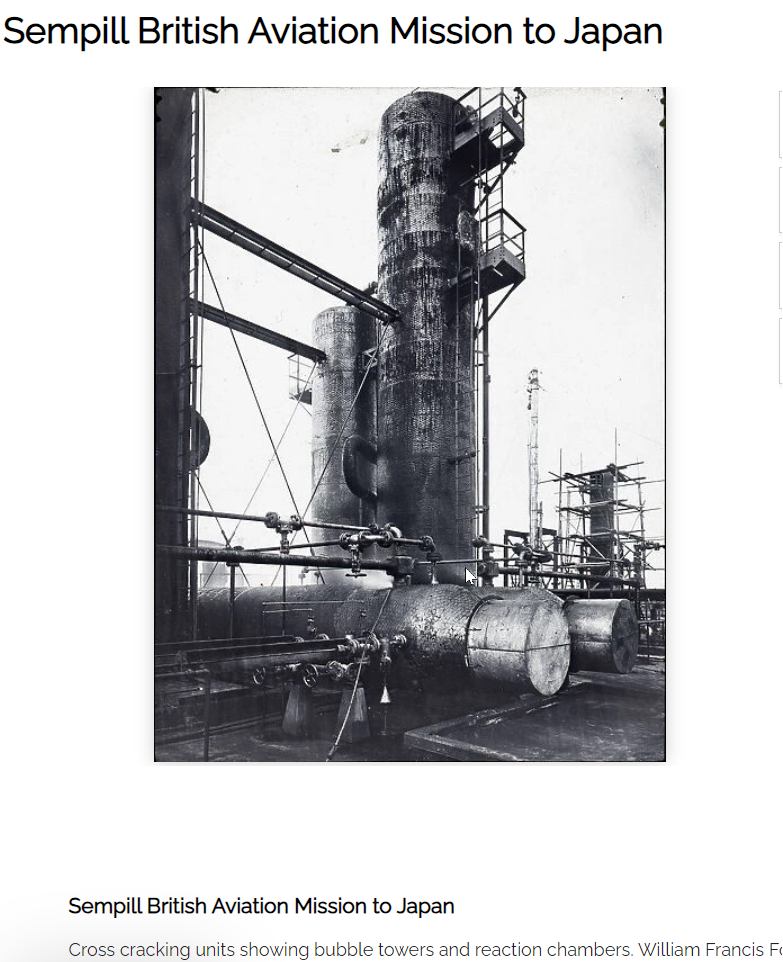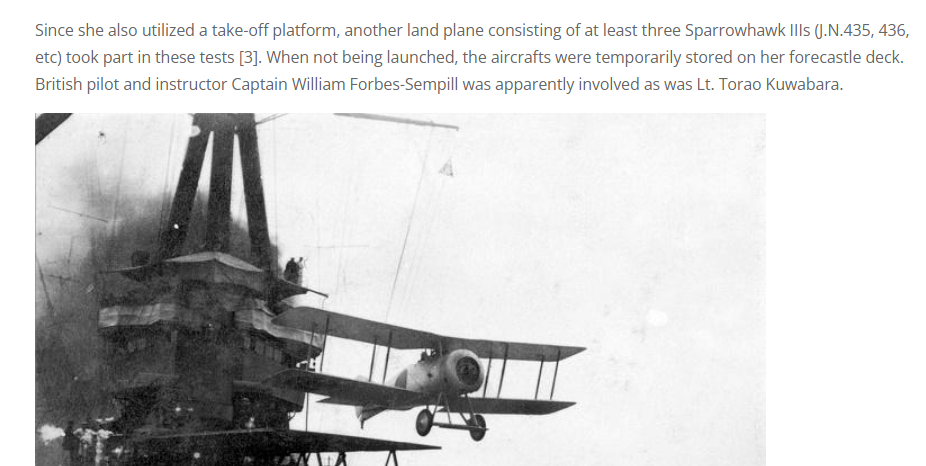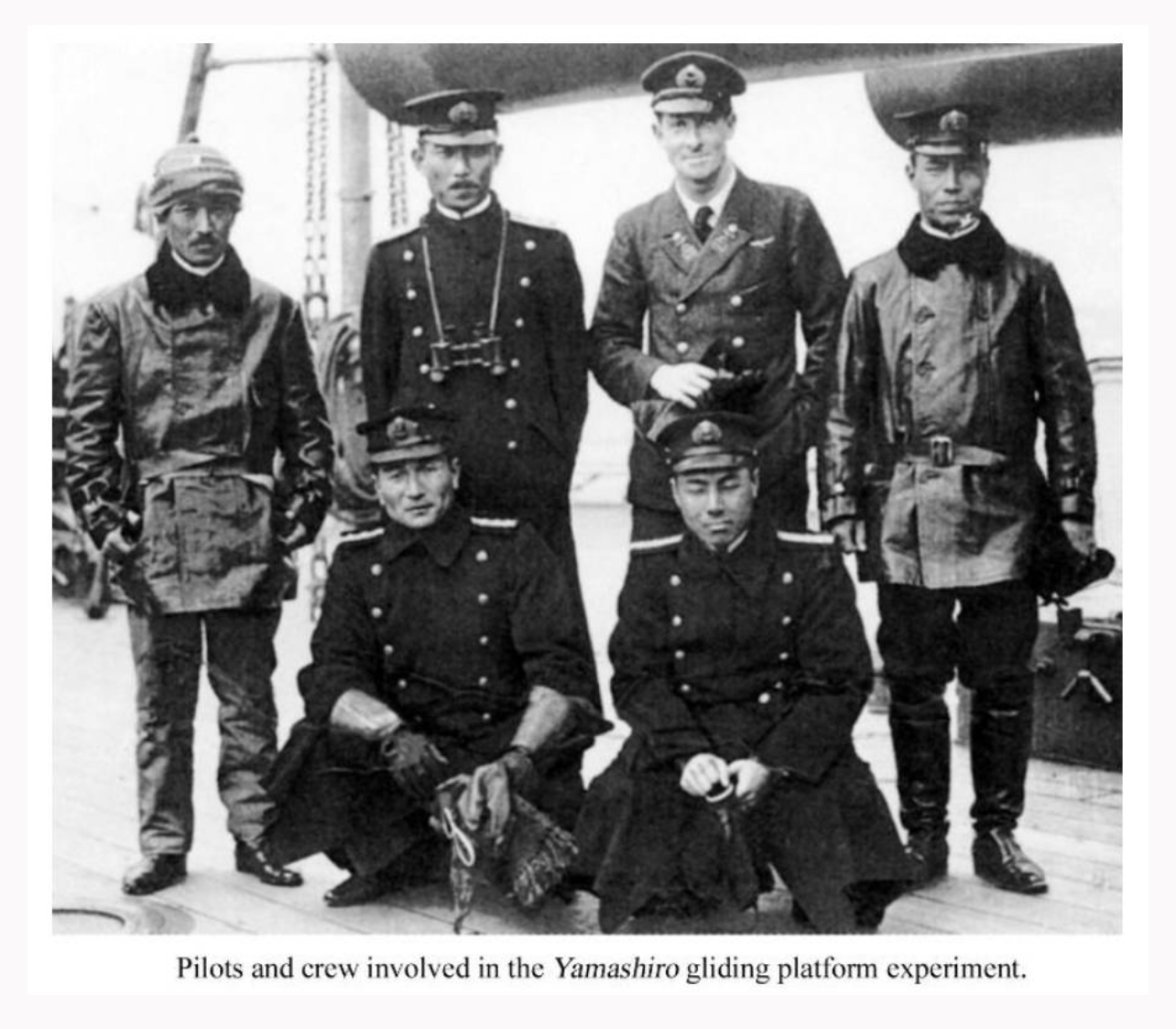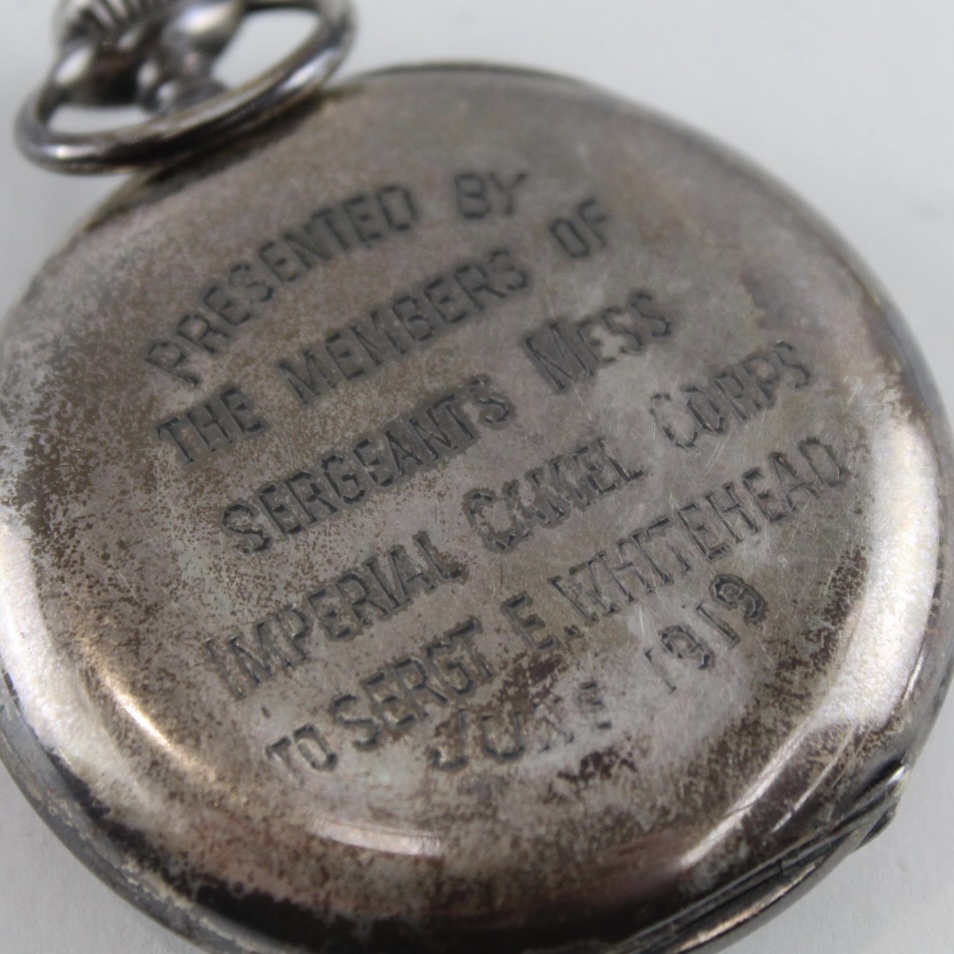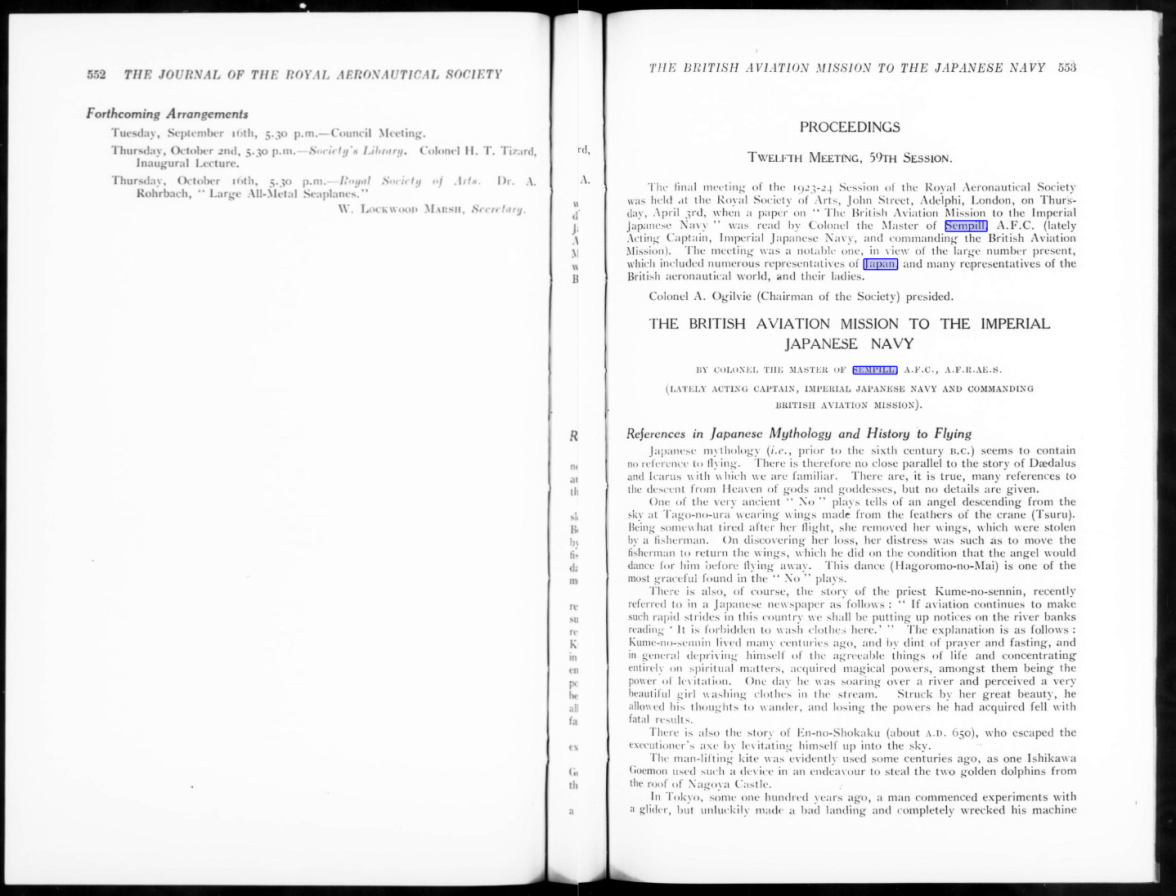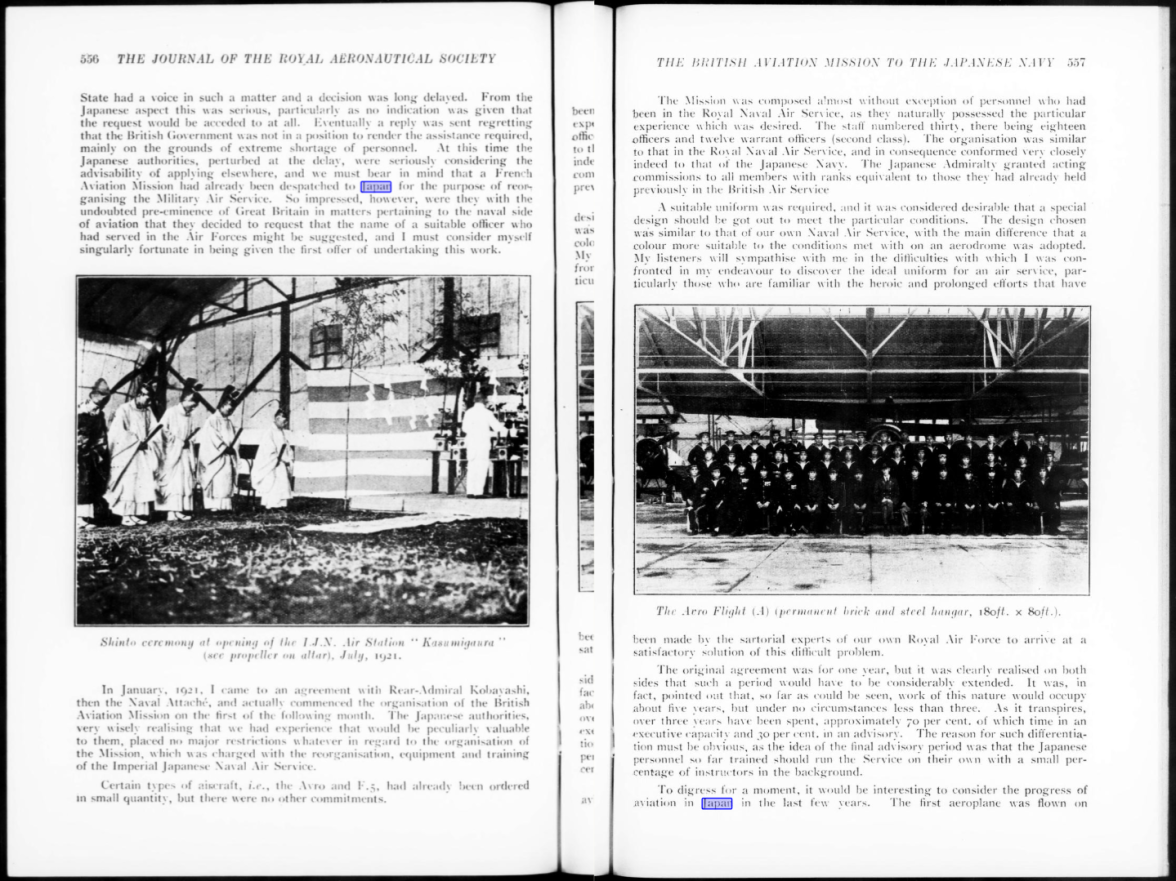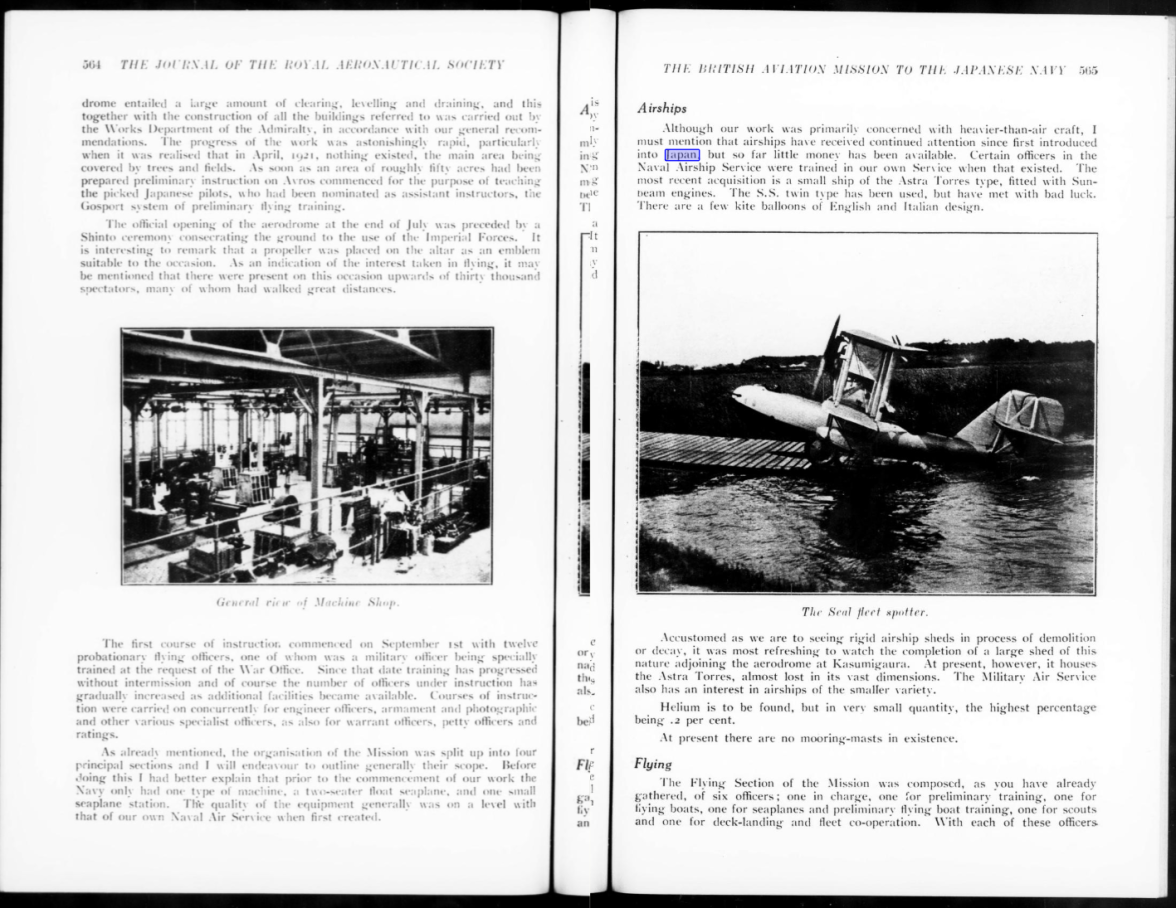On June 11, 1920, Sempill left London on the Nippon Yusen Sado Maru, accompanied by his wife Irene, their young daughter, and a maid, and arrived in Kobe on July 31. On the morning of August 1, he arrived in Tokyo by train, took the Joban Line train from Ueno, and arrived at Kasumigaura Air Base, which had just been established by the Navy, in the afternoon of the same day. Other members have been coming to Japan one after another since July. The group members lived in a specially prepared accommodation for foreigners, and Sempil lived in a house on the outskirts of Tsuchiura.

Mr. and Mrs. Sempill arriving at Kobe Port on July 31, 1921 (front row)

Sempill lived in a house on the outskirts of Tsuchiura. Sempil and his wife Irene in Japanese clothes. Irene died in 1935
This was the beginning of a 1 year and 3 month course run by the Sempil Flying Group, which lasted until October 1922.
The planes that the Japanese Navy purchased from Britain for the training included 72 Avro land trainers, 24 Avro surface trainers, 50 Sparohawk carrier-based fighters, 12 carrier-based reconnaissance planes, 12 carrier-based torpedo bombers, and 12 carrier-based torpedo bombers. A total of 181 aircraft, including 5 boats, 4 amphibious observation aircraft, and 2 torpedo bombers.
According to the recollections of Lieutenant Asazou Kikuchi, the training course began in Yokosuka as a re-education course for those who had already become full-fledged pilots in Japan, and then at Kasumigaura Airfield for aeronautical students who were about to learn how to fly. (later flight students) were taught from scratch.
Among the instructors who received Sempill's instruction were Captain Torao Kuwabara (later lieutenant general), Captain Takijiro Onishi (later lieutenant general), Captain Shunichi Kira (later lieutenant general), Captain Sadatoshi Senda (later lieutenant general), and Mikimori. During the Pacific War, many people, such as Captain Hiko (later Rear Admiral), led naval aviation units as air squadron commanders and air fleet commanders.

Sempil (front row center, with legs crossed) and Japanese Navy airmen at Kasumigaura Airfield

In August 1921, instruction by the Sempil Squadron began. Sempil is in the center
The training group's military discipline was strict, and its education could only be described in one word: "severe.'' All of the courses were conducted in English, but the training was not just about imparting knowledge, but also instilling in the Japanese instructors the mindset that pilots must share their fate with their beloved aircraft, and the strict cleaning of airplanes and equipment after flight work. If there was even the slightest mistake or lack of attention, he would scold her mercilessly.
"This later became the foundation for what would become our naval aviation."
That's what Kikuchi wrote in his notebook.
Sempill and others generously taught Japanese Navy instructors about the latest airplanes and new weapons such as aerial torpedoes. The UK has already commissioned the aircraft carrier "Argus'', which is a converted passenger ship under construction, and the aircraft carrier "Eagle'', which is a converted battleship that is currently under construction, and they are using completely new tactics to freely attack enemy territory with the aircraft they carry. I was groping.

Seaplane training by Sempil Air Group

Aerial torpedo drop scene. Sempill is believed to be piloting this plane.
The Japanese Navy has also noticed this possibility and has already laid down construction for the aircraft carrier Hosho. Of the ships that were originally designed as aircraft carriers, the Royal Navy's Hermes was the first to start construction, but the Hosho was completed earlier, in December 1922, and the Hosho became the world's first regular aircraft carrier. became. Sempill and his team also provided guidance to the Japanese side on construction techniques for aircraft carrier flight decks. The first Japanese to successfully land on an aircraft carrier (March 16, 1923) was Captain Shunichi Kira, one of the instructors.

Landing on the aircraft carrier "Hosho" by Captain Shunichi Kira

Sempill and his group taught 70 officers, 6 special officers and warrant officers who had graduated from the ranks, and 142 non-commissioned officers, and they laid the foundation for the later development of the Japanese Naval Air Corps. The Japanese government awarded Sempil the Order of the Rising Sun, Third Class, with Ribbons for his achievements. After returning from Japan, Sempill took on a job advising governments on purchasing British weapons.
While Sempill and his group were busy teaching aviation in Japan, the Washington Disarmament Conference was started at the request of the United States, which felt threatened by Japan's increasing naval power. As a result of this conference, Japan's number of capital ships (battleships) was limited to 60% of that of the United States and Britain, and the Anglo-Japanese Alliance, which had lasted more than 20 years, was set to expire in 1923.
Due to the Washington Disarmament Treaty, the battleship Kaga and battlecruiser Akagi, which were being built beyond the capacity of capital ships, will be converted into aircraft carriers. However, at the time, the Japanese Navy had very little know-how about operating aircraft carriers, and was still trying to find a ship to take off and land planes.
https://gendai.media/articles/-/76411?page=2
























